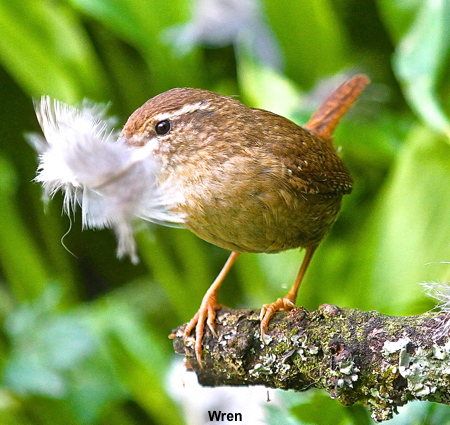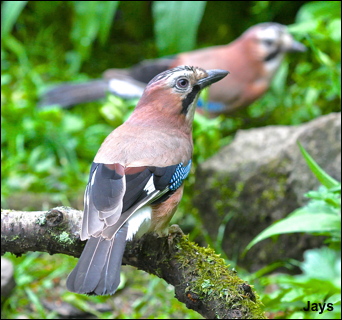Fledged Young
 Each year at this time we would normally be on Islay filming Hen Harriers.It is no consolation that we are at home in exceptional weather! However, the only bonus is that we are now able to watch and film the local garden birds as they fledge their young, something that we normally miss. So this weeks blog and Gallery includes Blue Tits and Starlings filmed recently.Click here
Each year at this time we would normally be on Islay filming Hen Harriers.It is no consolation that we are at home in exceptional weather! However, the only bonus is that we are now able to watch and film the local garden birds as they fledge their young, something that we normally miss. So this weeks blog and Gallery includes Blue Tits and Starlings filmed recently.Click here


 For no obvious reason the Lesser Spotted Woodpecker and Willow Tit are the two most threatened woodland bird species in Britain. In the last fifty years I have only photographed breeding Willow Tits once – 20 years ago! It was a delight therefore, last weekend, to return to within a couple of hundred yards of that first nest and obtain my first still photos of what has always been a very illusive species. Both birds were very tame and as an extra bonus a male from a second nest appeared and enabled some extra photos to be taken. See Gallery of both males and nest-site.
For no obvious reason the Lesser Spotted Woodpecker and Willow Tit are the two most threatened woodland bird species in Britain. In the last fifty years I have only photographed breeding Willow Tits once – 20 years ago! It was a delight therefore, last weekend, to return to within a couple of hundred yards of that first nest and obtain my first still photos of what has always been a very illusive species. Both birds were very tame and as an extra bonus a male from a second nest appeared and enabled some extra photos to be taken. See Gallery of both males and nest-site.  The blog of the 4th April featured Long Tailed Tits using Woodcock feathers for their nests. More recently have had Wrens in the garden gathering moss to start a nest. The male builds several nests and the female choses one which she then lines with feathers before laying her clutch of eggs. So the bird in this week’s gallery in photos is the female but to our eyes they look alike !!!
The blog of the 4th April featured Long Tailed Tits using Woodcock feathers for their nests. More recently have had Wrens in the garden gathering moss to start a nest. The male builds several nests and the female choses one which she then lines with feathers before laying her clutch of eggs. So the bird in this week’s gallery in photos is the female but to our eyes they look alike !!!  Todays blog and photos have been taken in the garden during the last seven weeks. The irony has been the unprecedented sunny weather and as a result the wildlife part of the garden at the back was in deep shade – all day! We have never had seven weeks like it at this time of year!
Todays blog and photos have been taken in the garden during the last seven weeks. The irony has been the unprecedented sunny weather and as a result the wildlife part of the garden at the back was in deep shade – all day! We have never had seven weeks like it at this time of year! One of the necessities of the present climate is taking the dog for a walk.The local canal towpath is now full of cyclists and walkers except in the early morning when it is still relatively quiet. For more than fifty years our local canal has produced common birds like Canada Goose, Mallard, Coot and Moorhen with nothing better than a passing Kingfisher or Goosander. All that changed on the 1st May when, at 7.00am, a wading bird flew up from the side of the canal giving alarm calls. It had a white rump and was clearly a Green Sandpiper on its way back to its breeding grounds in Scandinavia.
One of the necessities of the present climate is taking the dog for a walk.The local canal towpath is now full of cyclists and walkers except in the early morning when it is still relatively quiet. For more than fifty years our local canal has produced common birds like Canada Goose, Mallard, Coot and Moorhen with nothing better than a passing Kingfisher or Goosander. All that changed on the 1st May when, at 7.00am, a wading bird flew up from the side of the canal giving alarm calls. It had a white rump and was clearly a Green Sandpiper on its way back to its breeding grounds in Scandinavia.